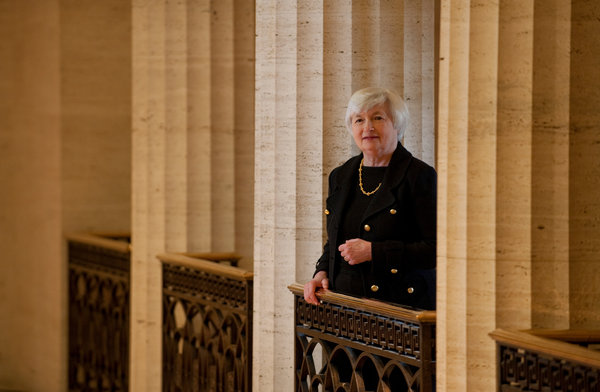Yellen’s Path From Liberal Theorist to Fed Voice for Jobs
< < Go Back
 When the economists Janet L. Yellen and George A. Akerlof hired a baby sitter for their son in the early 1980s, they decided to pay more than the going wage. They reasoned that a happier baby sitter would provide better care.
When the economists Janet L. Yellen and George A. Akerlof hired a baby sitter for their son in the early 1980s, they decided to pay more than the going wage. They reasoned that a happier baby sitter would provide better care.
The decision not only attracted a series of excellent sitters, it also inspired the couple, both professors at the University of California at Berkeley, to develop a new theory of the labor market that remains an influential justification for the Federal Reserve’s ability to stimulate job growth.
Employers, they asserted, often seek to improve morale by paying more than the minimum necessary wage, which has the effect of preventing some people from finding jobs. And during periods of high unemployment, they said, monetary stimulus can increase demand for labor – a direct rebuttal to the classical view, which left little role for the Fed in combating unemployment.
Thirty years later, Ms. Yellen and the debate about the Fed’s abilities have both moved from the theoretical world of academia to the Fed itself. As the central bank’s vice chair since 2010, she has pressed for stronger measures to reduce unemployment, battling the doubts of other Fed officials about the value of continuing to expand the Fed’s enormous stimulus campaign.
Ms. Yellen, 67, now finds herself as President Obama’s nominee to succeed the Fed chairman, Ben S. Bernanke, at the end of January, largely because many Democrats view Ms. Yellen as the best person to press that stimulus campaign and to strengthen financial regulation. Senate Democrats prevented the nomination of President Obama’s first choice, Lawrence H. Summers.
More From The New York Times:



